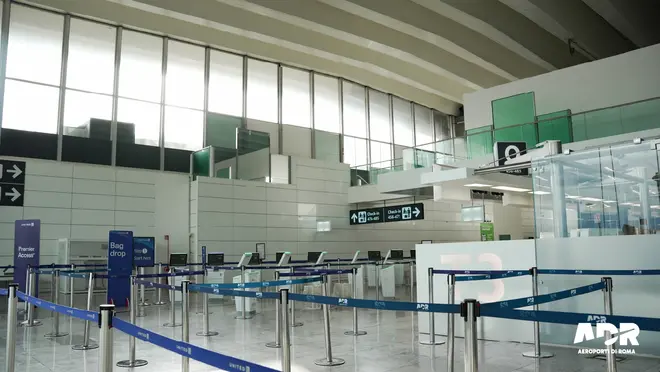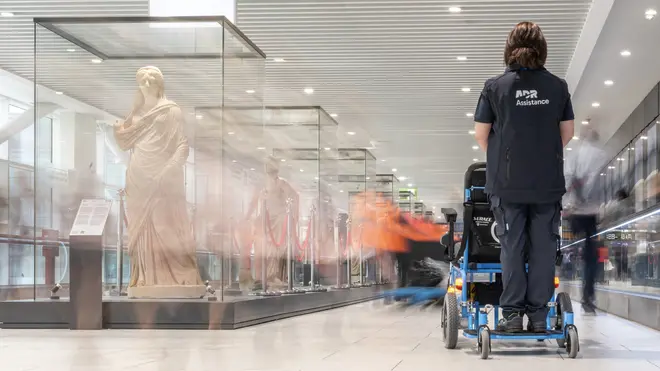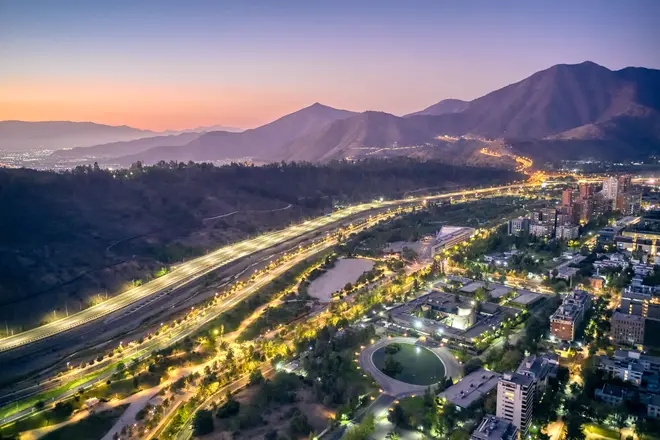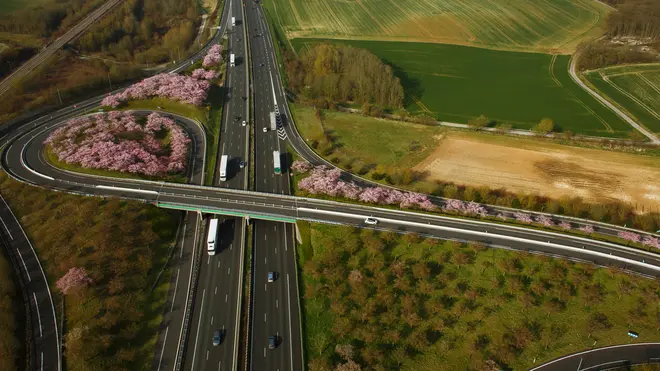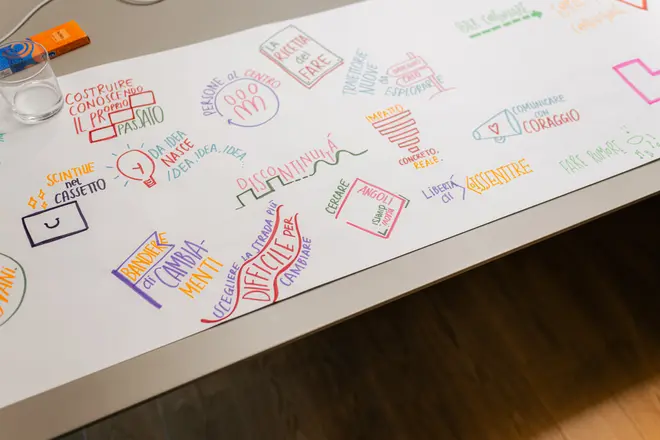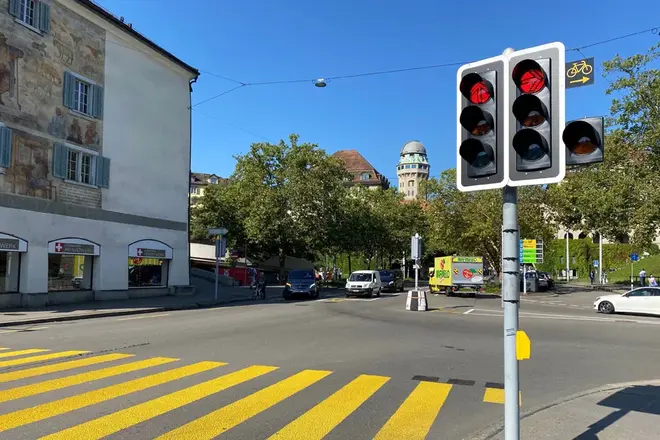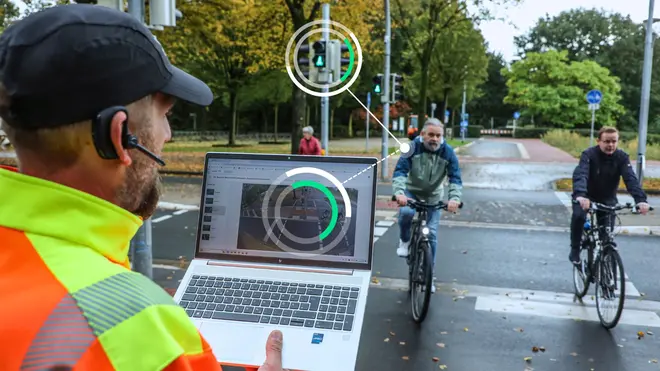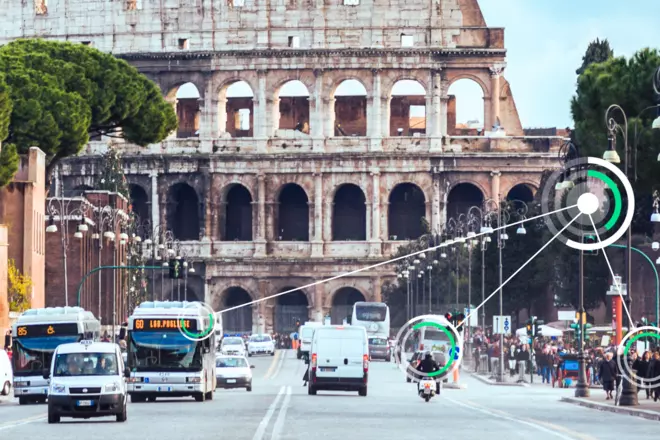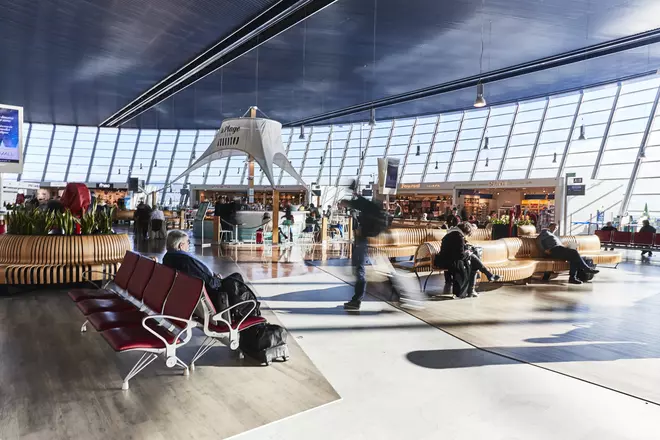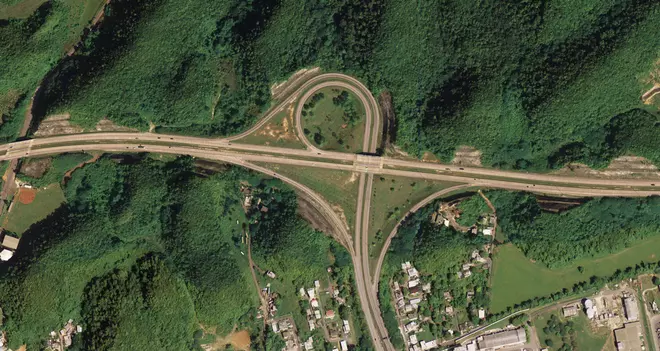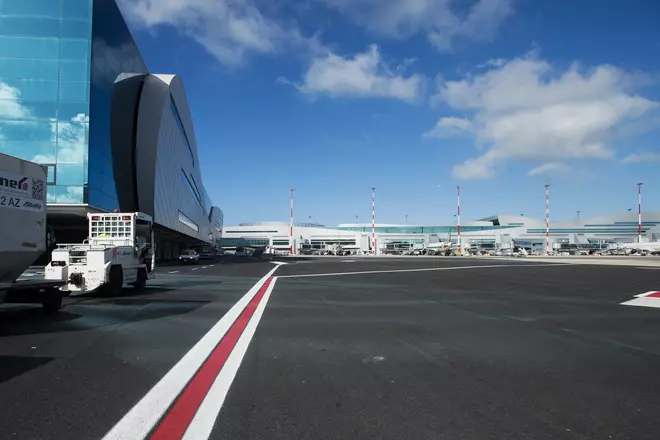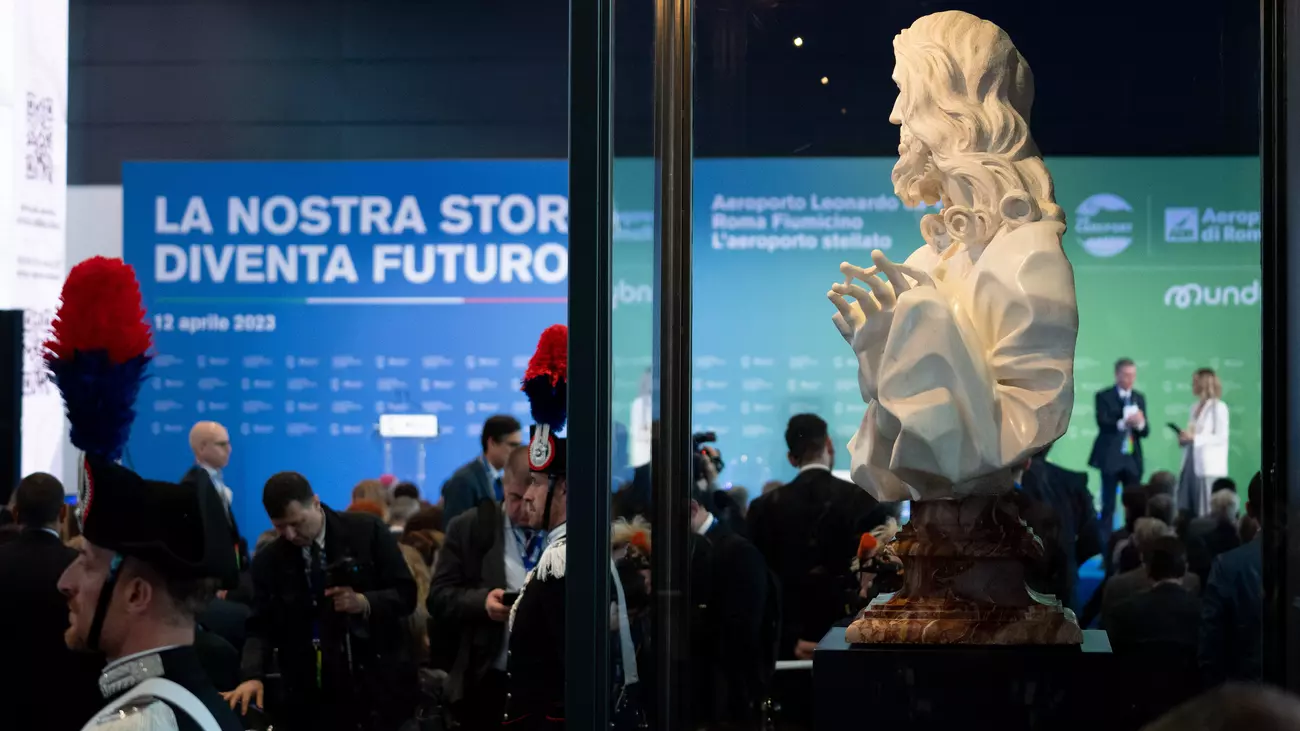
Less than a year after the inauguration of boarding area A of Leonardo da Vinci, the new boarding area of Terminal 1 was reopened today, with a capacity of 6 million departing passengers every year to national and Schengen destinations. It is a state-of-the-art infrastructure, equipped with 22 gates, more than half of which are equipped with boarding piers.
In line with the investments made by ADR, the focus was also on quality, sustainability and innovation for this project. Specifically, the interventions carried out concerned all the structural and plant components, for a design aimed at maximising the spaces dedicated to passengers and facilitating their orientation. In this logic, a great novelty is the possibility for passengers, by framing a QR code positioned on the lead walls of the boarding gates, to listen via podcast to a guide to the destination of arrival with curiosities and places not to be missed that can be downloaded and taken even in flight. The podcast produced is the result of the collaboration between Aeroporti di Roma and Chora Media, and is part of the joint "Audioporto di Roma Fiumicino" project, which aims to disseminate news, stories and art thanks to various series of thematic podcasts.
In the new boarding area, with a total area of almost 25,000 m2 , there are 12 new loading bridges for direct boarding onto the aircraft, 44 self-boarding gates, as well as digital columns integrated into the structures. In addition, a new baggage handling system was installed in the arrivals area, with 3 new baggage carousels for an additional capacity of an additional 3 million passengers a year. The infrastructure was built by adopting the most modern environmental protocols, without carrying out any excavations or increasing the existing infrastructure by a single cubic meter and reusing construction materials, also testifying to Italian excellence from an engineering and architectural point of view .
Thanks to these interventions, it will be possible to obtain optimal energy performance and reduced consumption compared to the past. The opening of the new infrastructure to the public adds a further and fundamental element to the redesign of the entire new Terminal 1, with a total investment of €500 million, which also provides for the opening of former boarding area C, expected before the summer and the renovation of the former Boarding Area D, which will be started in the coming months.
The architectural concept of the area was created through the use of the most advanced building technologies and the best standards of environmental protection. All design and development is “Made in Italy”, supervised by the ADR Engineering team of architects and engineers according to the Building Information Modelling (BIM) methodology, which allows a real-time dialogue between the various project components with a view to reducing the possibility of error and maximize the quality of the design.
Thanks to the collaboration with the Religious Buildings Fund of the Ministry of the Interior, departing passengers will be able to admire Bernini's final work, the ‘Salvator Mundi’, the great artist's spiritual testament, created around 1679 and coming from the Basilica of San Sebastiano Fuori le Mura. The exhibition is part of the more general strategy of the Leonardo da Vinci hub to promote local and national art and culture among Italian and foreign passengers. The sculpture depicts a half-length Christ blessing: the face of Christ, adorned with long hair, turns to the right and has an expression of great serenity and majesty, whilst the right hand in the act of blessing approaches the chest to the left. A rich drapery envelops the bust and contributes, with deep folds that create a strong contrast between light and shadow, to create a sense of movement accentuated by the light contrast of the body. The work is charged with spiritual intensity which, in the original project, was accentuated by the presence of an underlying base consisting of two kneeling angels who support the simulacrum with both hands, so that the image of Christ was carried in triumph. The sculpture of 106 cm high x 105 wide and 65 thick is the spiritual testament of the great artist who now at the end of his life wanted to deliver his reflections on life and death to the world.



